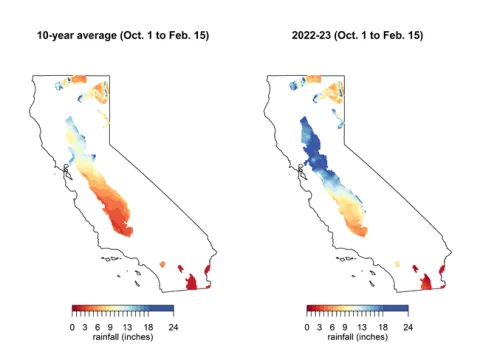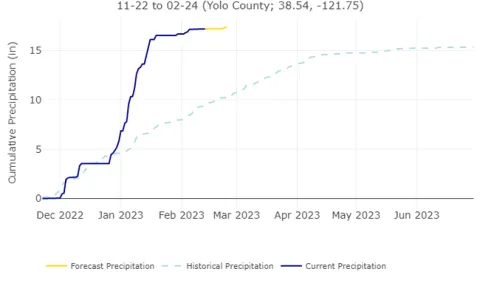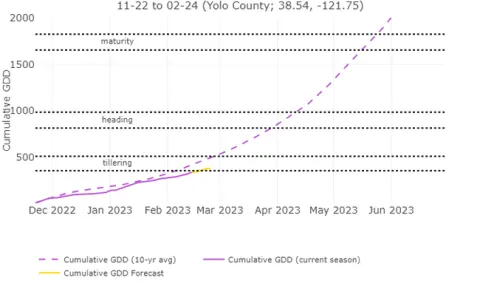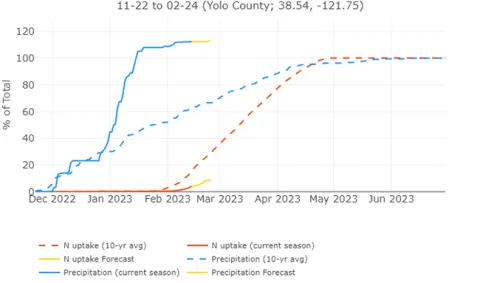The 2022-23 cropping season got off to a wet start throughout most of California. Across the main small grain growing regions of the state, rainfall is 158% of average to date (Figure 1), with 164% and 197% of average in the Sacramento and San Joaquin Valleys, respectively.

Much of this rain came in high volumes over short periods. See for example the seasonal rainfall accumulation for a field in the Yolo County area compared to the historical (Figure 2).

These intense storms resulted in highly saturated soil and, in some cases, waterlogged conditions for extended periods. Such conditions lead to nitrogen losses from the crop root zone and can slow rates of crop growth and development relative to normal conditions (Figure 3).

With the majority of the crop's seasonal demand for nitrogen still to come (Figure 4), it may be worthwhile to check on the plant-soil nitrogen status of winter cereal crops in the near future.

In recent years, the University of California has developed a suite of informational resources related to in-season N management. Among these are a DIY soil nitrate quick test, using N-rich reference zones for assessing plant N sufficiency/deficiency, and interactive web-tools that produce site-specific information in the seasonal context. The Crop Growth Stage and Forecasting Web Tool is newest among these tools. Figures 2-4 (above) were produced using this tool with information that is specific to a field we are monitoring and managing this season. If you are growing or advising on winter cereals this season, check out these resources, and be sure to contact a UC Cooperative Extension agronomist if you have related questions.

